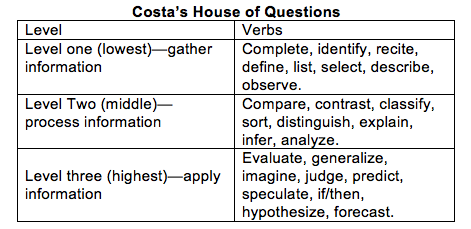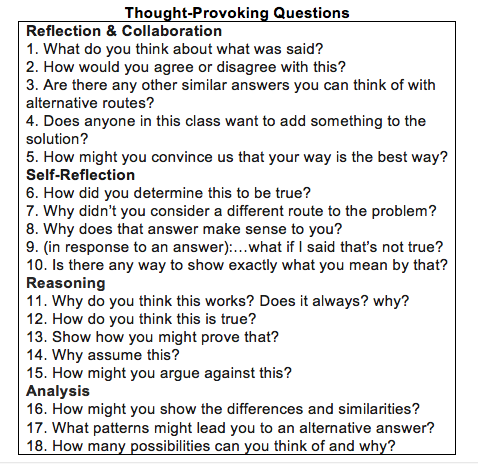How to Improve Your Questioning Techniques
Asking and answering questions is an everyday occurrence in most classrooms. Sometimes it happens orally, sometimes in writing, but it is one of the most common classroom activities.
Good questioning helps students build understanding, but poor questioning can deter students from learning. How can you create questions that will help all students learn? First, let’s look at common mistakes we make with questions.
Questioning Mistakes
Questioning is a basic and critical part of your classroom. But teachers often make mistakes during the process. These include not probing beyond a single answer, not encouraging students to ask questions, and asking lower-level questions. On the student side, too often one or two students dominate the conversation.
We typically use Bloom’s Taxonomy to create questions. Let’s look at four other models that can provide guidance: Questioning by Function, Ciardiello’s Four Types of Questions, Costa’s House of Questions, and Thought-Provoking Questions.
Questioning by Function
In their book, Asking Better Questions (2006), Norah Morgan and Juliana Saxton classified questions by function. They proposed three types of questions: Questions that Elicit Understanding which draw out known information, Questions That Shape Understanding which ask for thoughts and feelings, and Questions That Press for Reflection which require critical and creative thought. Within each classification there are specific types of questions.
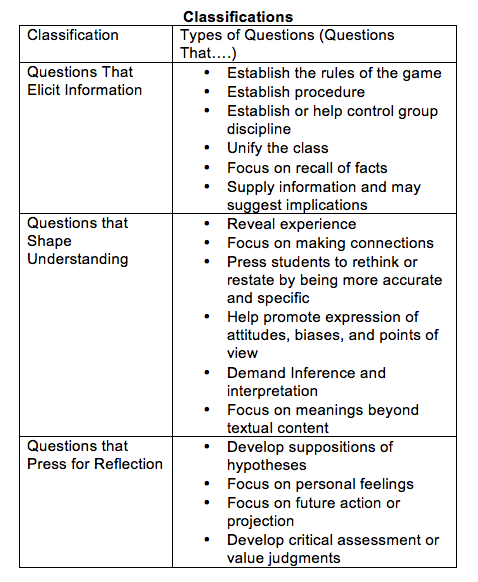 Morgan and Saxton also provided examples of questions for each classification related to the causes of World War Two to help us better understand them.
Morgan and Saxton also provided examples of questions for each classification related to the causes of World War Two to help us better understand them.
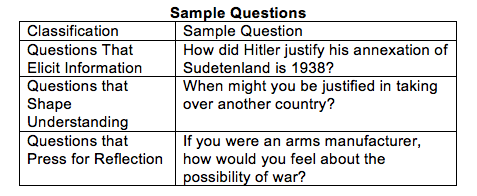 Ciardiello’s Four Types of Questions
Ciardiello’s Four Types of Questions
In Did You Ask a Good Question Today? (1998), Angelo V. Ciardiello identified four types of questions, as well as corresponding question stems and cognitive operations. They are simple, but they provide a clear framework for crafting questions and assignments.
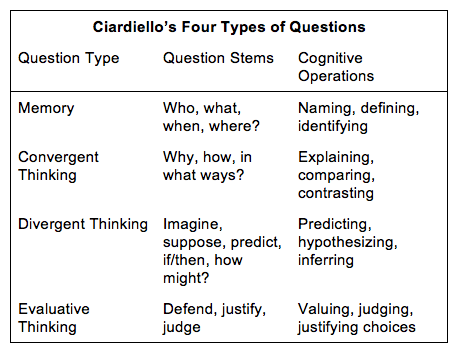
Costa’s House of Questioning
Arthur Costa and Bena Kallick (2008), authors of Learning and Leading With Habits of Mind, provide a different model. It is a three-level, user-friendly, practical story house to describe the levels of questioning. I’ve observed this model used in several AVID (Advancement Via Individual Determination) classrooms, and it is effective for both students and teachers.
Let’s look at some samples showing how Costa’s House of Questions can be applied in math, reading, and science.
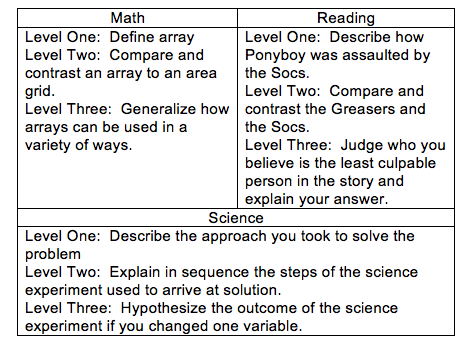
A Final Model: Thought-Provoking Questions
Finally, it’s important that our questions promote additional thinking, rather than simply retrieve rote memories. Lisa Chesser shares sample questions that can be used in a math classroom. They are easily adaptable to all subject areas.
In Conclusion
When designing and asking questions, you can draw ideas from any or all of the models. What is important is that you ask a wide range of types of questions. These four models provide a variety of insights you can use while planning your questioning.
For even more resources about Questioning,
see Jackie Walsh’s MiddleWeb articles.
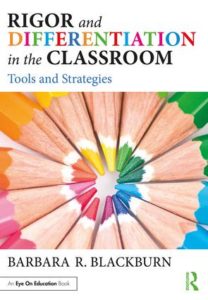
Barbara Blackburn was named one of the Top 30 Global Gurus in Education in 2017.A former teacher, school leader and university teacher educator, she is a best-selling author of 21 books including Rigor is Not a Four Letter Word and Rigor and Differentiation in the Classroom: Tools and Strategies (Routledge, 2018). A nationally recognized expert in the areas of rigor and motivation, she collaborates with schools and districts for professional development. Barbara can be reached through her website or her blog. Follow her on Twitter @BarbBlackburn.


